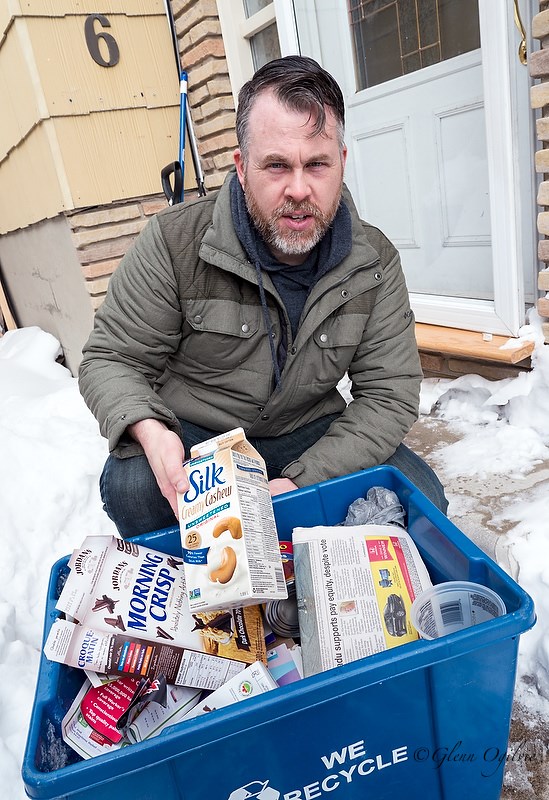Cathy Dobson
Knowing what to put in your blue box and what to leave out can help recyclers and reduce the amount of household waste sent to landfill.
So says Luiza Adsett, municipal affairs and communications officer at Waste Management (WM), which is contracted to process recyclables from Point Edward and Sarnia.
Some confusion has arisen following the release of a Sarnia Environmental Advisory Committee report that questioned the value of putting glass and plastic bags in our blue boxes.
Adsett said that first and foremost she wants the community to know that clean glass does still get recycled, despite its low commodity prices.
The market may be small and unstable but glass from Sarnia and Point Edward doesn’t get landfilled or stockpiled, she said.
Much of it goes to a company called NexCycle in Guelph where it is processed into a raw material called cullet, then sold back to the glass industry for containers and insulation.
As for plastic bags, both municipalities say they still want resident to placed empty plastic bags and plastic film in the blue box.
“As long as the plastic bag or film is clean it will be processed. However, if it becomes soiled it may get sorted out at the plant and sent to landfill,” says Sarnia’s chief engineer Andre Morin.
“Under the current recycling contract, Sarnia does allow residents to place their recyclables at the curb in clear plastic bags,” added Morin. “Staff feel that this has increased the amount of material being diverted from the landfill and sent for recycling.”
But keep in mind, if you use clear plastic bags rather than blue boxes, they will get dirty, making them unfit for recycling.
Adsett urges residents to bundle plastic bags together to keep them clean and prevent them from getting entangled in machinery during processing, a problem that was noted by the Environmental Advisory Committee.
Finally, small single-serve containers like those used for yoghurt can go in the blue box as long as they are clean and not stacked or hidden inside other containers.
“If the containers are too small, some might not land in the right bale,” Adsett conceded. “But we have about a 95% capture rate for single-serve containers.”
The recyclables currently bringing in the highest return – and a nice rebate cheque to Sarnia and Point Edward – are newspapers, plastic water bottles and aluminum and steel cans.
It’s important to remember that all recyclables must be clean. If containers or pizza boxes are dirty or have food residue, they go straight to the landfill.
WHAT’S ACCEPTABLE IN YOUR BLUE BOX
FIBRE:
Newsprint
Flyers
Household and office paper
Catalogues
Magazines
Boxboard like cereal boxes
Corrugated cardboard
Paper tubes
Clean pizza boxes with no food or grease
Books (hard covers removed)
GLASS, CANS, PLASTIC
Small plastic containers coded 1 – 7 (under one litre)
Plastic ‘clamshell’ containers
Plastic bags
Empty, dry metal paint cans
Glass bottles
Cans
Blister packaging
Flower pots
Tetra Pak boxes
Milk and juice cartons
Aluminum plates and trays
WHAT’S UNACCEPTABLE IN YOUR BLUE BOX
Styrofoam
Motor oil bottles
Aerosol cans
Broken glass
Mirrors
Plastic paint cans
Glass dishes
Ceramics
Hazardous waste
Biohazards
Medical equipment
Auto parts
Batteries
Building materials
Syringes
